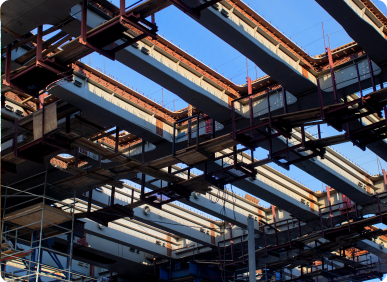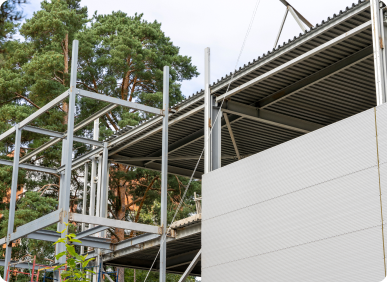Structural steel melts at approximately 2,500°F, while building fires commonly reach a temperature in the range of 2,000°F. The possibility of melting steel is rare, but this does not mean that steel structures are safe. Consider that the material deforms and loses strength when exposed to high temperatures. Building codes require fireproofing protection for structural steel as a safety precaution.
Fireproofing steel will ensure a building keeps its shape in the event of a fire, allowing people to escape during an emergency. Commercial structural steel should meet at least the 2-hour fire resistance rating, among other requirements. The common ratings are 2-, 3-, and 4-hour marks. Certified AISC structural steel fabricators are qualified to meet fireproofing needs.



The most common way of fireproofing is by spraying low-density fibers or cementitious compounds, called spray-applied fire-resistive materials or SFRM. These sprays can be applied wet or dry, in coatings of the desired thickness, to provide heat resistance to steel. However, they are also used in wood, fabrics, and other materials. Even though sprays are the most common, they are not the only choice, and this section will describe other options.
These coatings are also known as intumescent paints, and they provide fire resistance to steel members. Intumescent coatings can expand as much as 100 times their original thickness, providing greater resistance by creating a buffer between a steel element and the fire. The coatings will undergo a chemical reaction and expand when exposed to extreme heat. This product is applied just like paint, and commonly used in steel exposed to the general public.
© 2024 Boston Insulation Group LLC All rights reserved